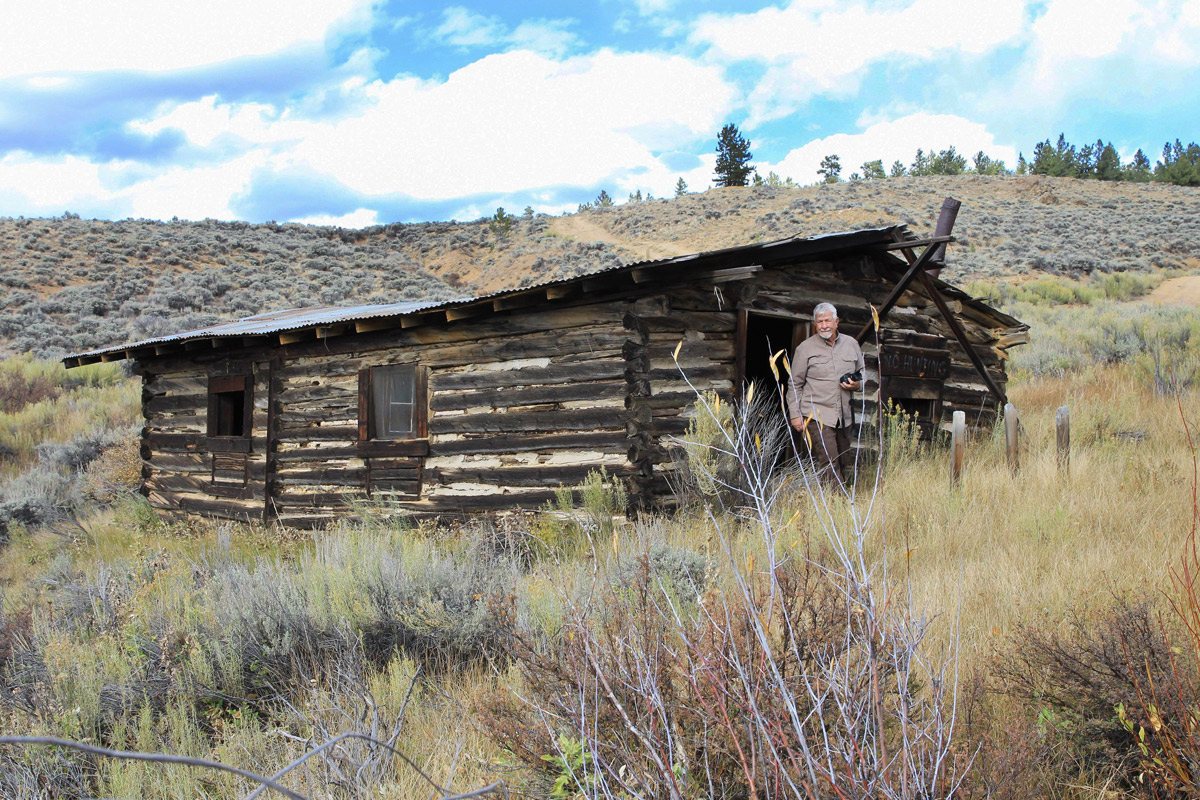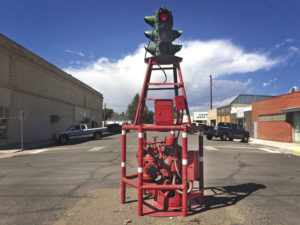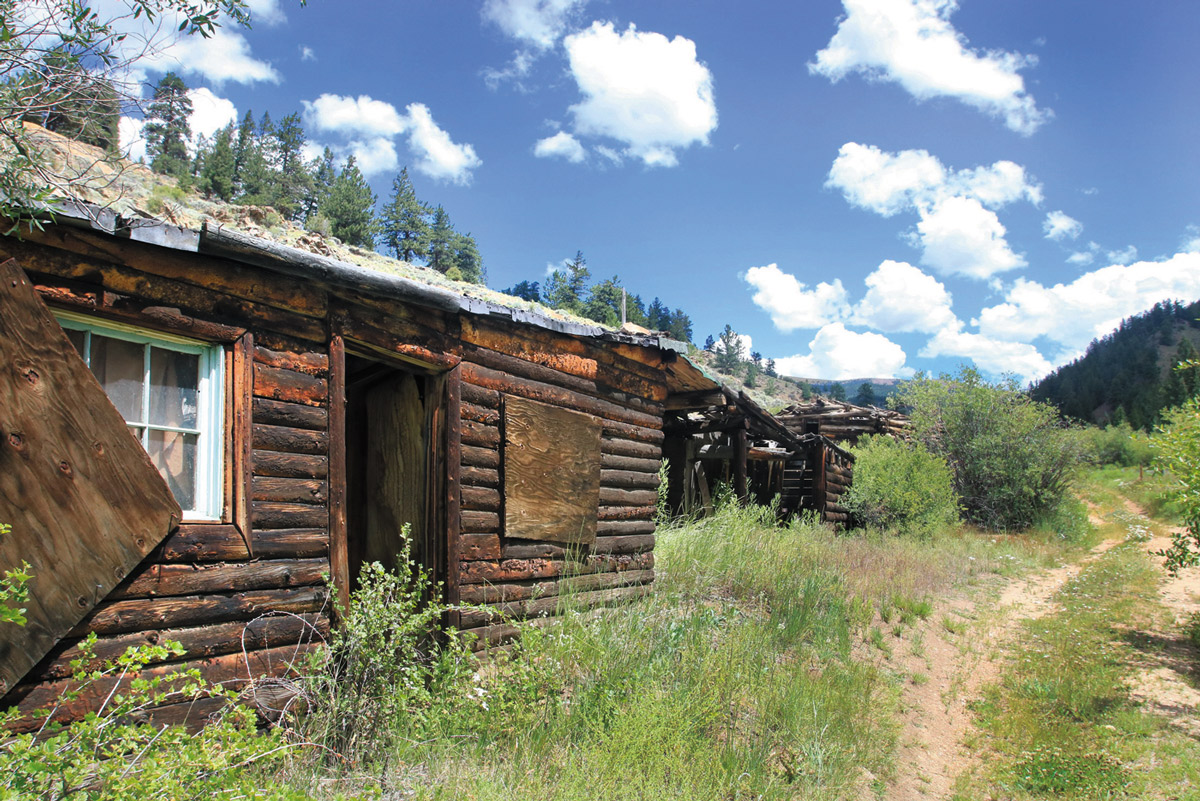
Story and photos by Kenneth Jessen
On the east side of the Arkansas River, north of the town of Granite, were several small mining camps based on the discovery of gold ore in 1860s. Historically obscure, they are only mentioned in passing in ghost town books. Hawkinsville, in Hawkinsville Gulch, was not really a town and more of a named location. There are a few scattered cabin ruins today, but there were probably many more during its peak.
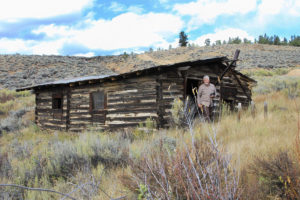
At first, there was a great deal of excitement over the discovery of gold ore. Typical of so many mining camps, interest died down. The Yankee Blade, located above Hawkinsville but south of Low Pass Gulch, may have been the most productive. Its claim dates back to 1869. By 1897, nearly a third of a million dollars in gold had been recovered (around $6 million in today’s dollars).
The Yankee Blade had a dozen buildings including a boardinghouse. According to the Salida Mail in 1885, employment was around 30 men. The tunnels were listed at 1,200 feet. The Belle of Granite stamp mill was located about a half mile away in Low Pass Gulch. It processed the ore for this and other mines in the region.
[InContentAdTwo] The shaft of the Yankee Blade filled with water. In 1891, the Granite Tunnel was started in the lower part of Low Pass Gulch and angled to the south with the idea of draining the Yankee Blade and other mines in the area. How much work was completed is not known. The tunnel did have an effect on the area with resurgence in activity, and according to an 1896 issue of the Silverton Standard, all of the area cabins were occupied by miners.
Even with good rail service a short distance away along the Arkansas River, mining activity slowly died. There isn’t any mention of Hawkinsville in area newspapers after 1900.
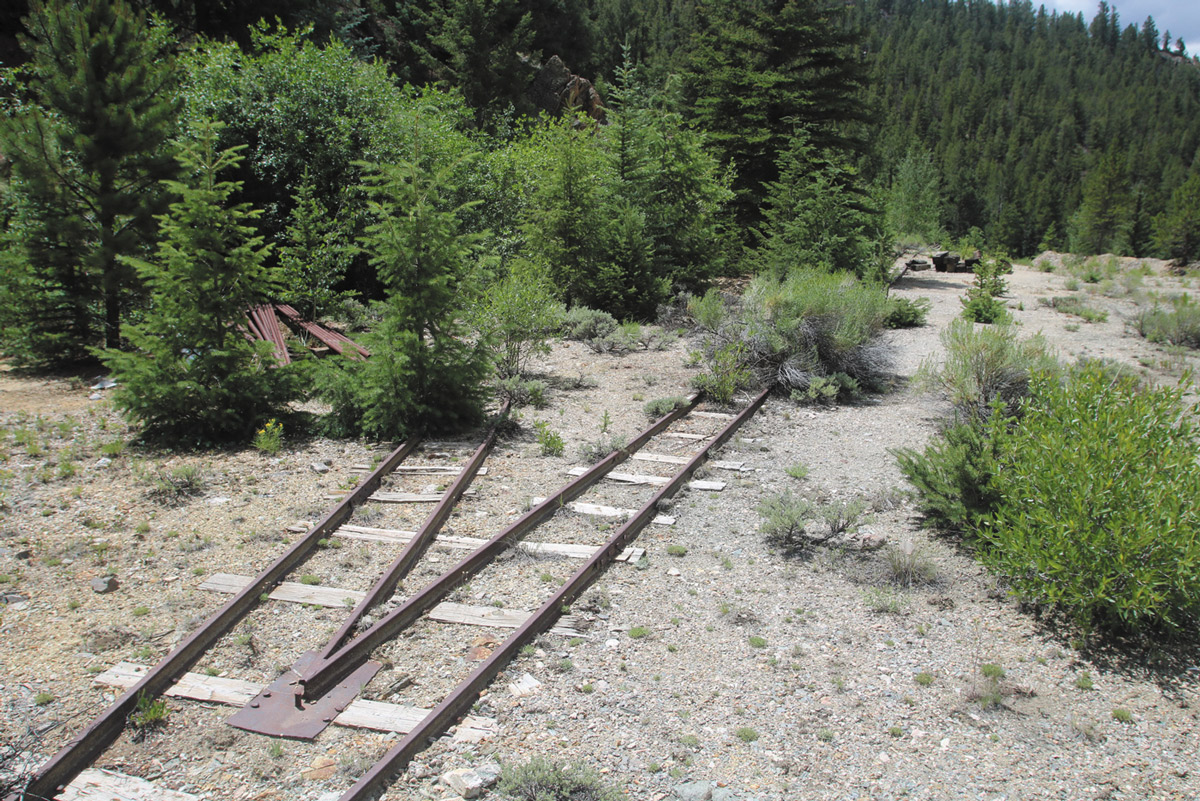
Today, the area north and east of Granite is pockmarked by exploratory holes mixed in with several mines. Very little of this area is open to the public, as the old mining claims have been purchased. Some are occupied by summer homes. In addition, the access roads are gated and posted.
Loveland resident Kenneth Jessen is always after something old, but new to him. After visiting 1,600 ghost towns and writing about them, he is anxious to add new towns to his list. (Photograph by Sally Hartshorn)

